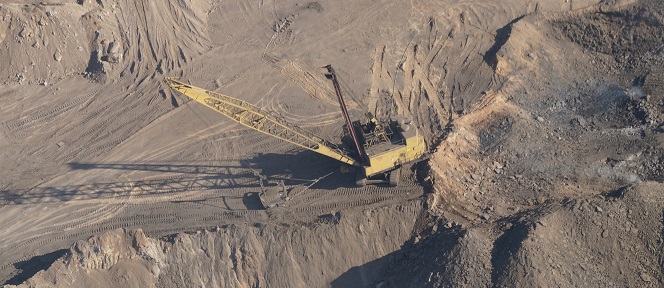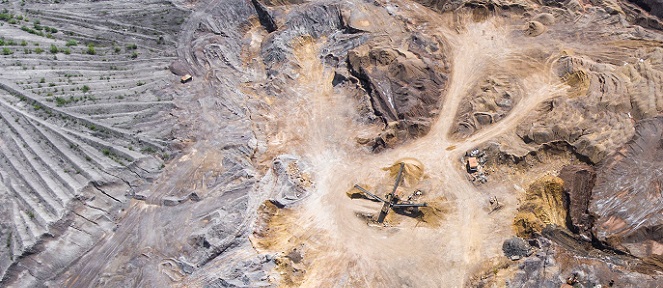Recent years have seen a real upsurge of interest in brownfield site restoration, which involves giving new uses to abandoned land and improving the quality of degraded soils while reducing the risks to future users. Projects are now going beyond the traditional parameters of urban renewal – focused on housing, economic activities and public infrastructure – and increasingly leaning towards so-called “alternative” uses such as renewable energy generation, warehousing and rewilding. In this article, we will be taking a look at the key developments in legislation, regulations and standards.
Updates to methodology regulations
After ten years in use, in early 2017 the French Directorate General for Risk Prevention (DGPR) updated its regulations governing the methodology for management of contaminated sites and soils (see note of 19 April 2017). The new regulations introduce the concept of Works Design Plans (Plans de conception des travaux, PCT) and also reflect changes introduced by the French government’s 2014 ALUR law on improving access to housing and updating town planning (see box). These changes taken together led to a revision in December 2018 of French standard NF X31-620 (relating to service provision in the field of polluted sites and soils) and to the “SSP Certification” decree dated 19 December 2018, setting out certification methods and the template for declaration.
What’s new with the ALUR law?
Article 173 of the ALUR law provides for the creation of “sectors of information on soils (SIS). These encompass land for which known contamination justifies soil surveys and contamination management measures for reasons of safety, public health or hygiene, and environmental protection, particularly in cases where land has undergone a change in use. These “SIS” are “appended to the PLU (French local land development plan), carte communale (French municipal land-use plan) or equivalent planning document.” According to the DGPR, to date 2,700 SISs have been decreed, whilst 2,467 are in the consultation phase and 1,725 are still being drafted. The ALUR law also introduces the concept of interested third-parties. This allows any interested third party to take the place of the operator of a site subject to an CEPI (French site classification system for environmental protection) decree, granting the third party permission to perform restoration work in line with the use it intends for the site.
Protecting soils as a resource
Alongside this, soil as a resource is also covered by the French government’s TECV (Energy Transition for Green Growth) law of August 2015, as well as its draft bill on avoiding waste to promote the circular economy which was adopted on 21 January 2020. It equally features in the “Biodiversity Plan” of July 2018, which includes “zero net land artificialisation” as one of its key objectives. According to modelling by France Stratégie, achieving this objective by 2030 implies reducing gross land artificialisation by 70% and restoring 5,500 ha of artificialised land every year.

Accounting for soil quality
A restoration project may show significant discrepancy between soil survey results and the reality of the works performed. Properly anticipating soil management (particularly through more detailed characterisation) permits the choice, for example, between on-site treatment without excavation, and treatment after excavation with the option of re-using the soils on the same site or a different one. If such anticipation is lacking, time pressures will greatly limit the options available.
Reusing excavated soils
Fundamental to the field of polluted soils and sites, the notion of reusing excavated soils is now more topical than ever. Certainly, with the implementation of large-scale projects such as the Grand Paris Express and the 2024 Olympic Games, the amount of soil generated is set to increase considerably. For example, underground works for the Grand Paris Express alone will generate 43 Mt of soil, of which a significant part will comprise non-inert soils. When reused, these soils are directed towards development projects, road-building, brick-making and quarry in-fill. However, users find themselves confronted with the thorny issue that the excavated soils are classified as “waste”. Faced with this problem, the French authorities have drawn up a draft decree(1) whose consultation phase ended last June (see box). Having been postponed since then owing to changes proposed in the Circular Economy draft bill (particularly relating to the issue of traceability), the decree is expected to be adopted by the end of the first semester 2020. At the same time, we should soon see the publication of new reference guides on the use of excavated soils. One of these is intended for development projects and complements the existing guide(2), while the other two focus on use in road-building.

Decree relating to “declassification as waste”
The draft decree defines three fundamental criteria that will have to be met in order that excavated soils and sediments “which have been prepared for use in civil engineering or land-use planning cease to be considered as waste material”. On the one hand, incoming waste must meet two types of criteria set out in Annexe 1 (soil, stones and dredgings falling under five specific categories of waste, as well as questions relating to the receiving site). On the other hand, the person preparing the material must draw up a handover contract with the third party who will be using the excavated soil and sediment.
Brownfield site restoration is manifestly a major factor in regional development, simultaneously relating to questions of limiting urban sprawl, land use and soil as a resource, as well as major issues such as land artificialisation, adapting to climate change, and the conservation of resources and biodiversity.
The French Ministry for the Ecological and Inclusive Transition is tackling the issue head on, and in June 2019 launched a working group tasked with “discussing means of accelerating”. It has also established brownfield site restoration to combat land artificialisation as one of the main thrusts of the Environmental Defence Council (a sub-committee of the French cabinet bringing together ministers responsible for the ecological transition). In this context, the French government has “validated five concrete projects to act as pilots for a more comprehensive approach which will be finalised with all relevant stakeholders by next spring”.
For its part, the ADEME (the French Environment and Energy Management Agency), which has already supported almost 130 projects since 2010, last November launched a fresh wave of its call for projects “Decontamination Works for the Restoration of Contaminated Brownfield Sites”. The expected example projects will be assessed against three criteria: decontamination in situ or on site, integrated design and local “suitability”. The deadline for applications is 2 April 2020 (www.ademe.fr).
1) Draft decree fixing the criteria for declassifying as waste material excavated soils and sediments that have been prepared for use in civil engineering or land-use planning.
2) Guide de valorisation hors site des terres excavées issues de sites et sols potentiellement pollués dans les projets d’aménagement (“Guide to off-site use in development projects of excavated materials from potentially contaminated soils and sites”) (BRGM, Inéris, MTES). The two guides on use in road-building have been produced by CEREMA (the French Centre for Studies and Expertise on Risks, Environment, Mobility, and Urban and Country Planning).
Read more: On 23 January, the AFITE (French Association of Environmental Engineers ) organised a symposium entitled “The current situation and outlook concerning the restoration of contaminated sites”, which provided an opportunity to take stock of legislative and regulatory developments, present new tools, and share a range of feedback from many experts and key players in the sector (www.afite.org).




